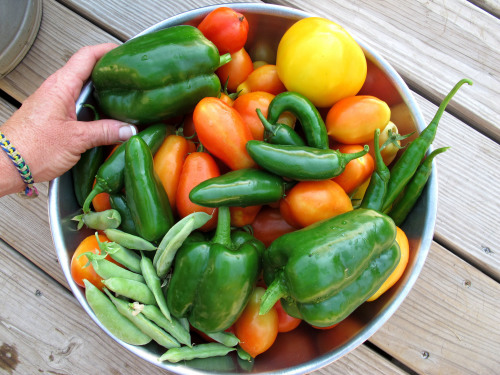4 Easy Steps to Your First Vegetable Garden
All it takes is a couple of successful experiences to make you a vegetable gardener for the rest of your life

All it takes is a couple of successful gardening experiences to make you a vegetable gardener for the rest of your life. In fact, probably just one good experience will be enough to keep you motivated.
Vegetable gardeners are born everyday. Maybe you’re only familiar with the foundation landscaping that came with your house (via the developer). Perhaps you’re an avid ornamental grower who has promised yourself to give edibles a try come spring. or maybe you’ve never planted a thing in your life and stumbled into this website quite by accident. Whatever the scenario, I assure you that you can grow a little food.
Learn more: Easiest Vegetables to Grow
Step 1. Of course, which vegetables you should start with isn’t always clear. Let me make this easier: What vegetables do you enjoy eating? Start there.
Step 2. The next thing to do is compare your list of favorite vegetables to a list of easy-to-grow vegetable plants—because some veggies are just more laid back than others. They can make first-time vegetable gardeners successful in their very first season.
Step 3. Check perfection at the garden gate. I mean it. There is no perfect plant, zone, or gardener. Some of your plants are going to thrive—and some aren’t. I don’t care who you are. This is a fact.
Step 4. Ask around. Get the latest dirt (pun intended) from the locals on the tomatoes, peppers, or green beans that are winning in your garden zone. This is no time to be shy, so head to your local nursery and/or call the cooperative extension office in your county. You’ll get an earful.
Easy-to-Grow Vegetable Plants
Herbs: Herbs in the vegetable garden or in their own herb bed make fantastic first plants. Once established, most herbs require little watering. They do well in poor soil but do like a well-draining one.
Summer and winter squashes: This is a useful and healthy vegetable family with easy plants for the gardener. Plant summer squashes such as cucumbers and zucchini, and winter squashes like pumpkin and spaghetti squash.
Lettuce: Leafy salad greens are easy to care for and mature incredibly fast. Gardeners can plant seeds and harvest the lettuce for the dinner table in a month. You’ll have the best luck if you grow it in the cool months such as early fall and late spring. Versatile lettuce tolerates nearly any type of soil, and its reliability makes it a crop that’s easy to experiment with.
Tomatoes: Ahhh, the darlings of the home vegetable garden. Tomatoes can take full-on heat, and there’s a variety available for every climate. The key with tomatoes is to choose varieties that love your zone. Surprisingly few plants are needed to produce a high yield of fruit, and bush (determinate) varieties are particularly easy to grow in containers.
Radishes: Radishes are among the simplest vegetables to grow. They germinate easily and don’t make any quirky demands. Plant them alongside carrots; just as the radishes are ready to be harvested is the right time to thin carrot seedlings.
Potatoes: Potatoes are not only easy to grow, but fun to harvest.
Carrots: Carrots are indispensable in the kitchen garden. Yes, carrot seeds take a lot longer to germinate than many other seeds (just keep them moist and they’ll pop up), but carrots aren’t hard to care for and are fun to grow.
Green beans: Green beans come in bush types and climbing types. Both are easy to grow, but the climbers will keep producing if you continue to harvest the beans.
Peppers: From bell to chili, hot to mild, peppers are an exceptionally easy crop to grow. Peppers come in a wonderful assortment of colors, even lavender and purple.






Comments
Log in or create an account to post a comment.
Sign up Log in